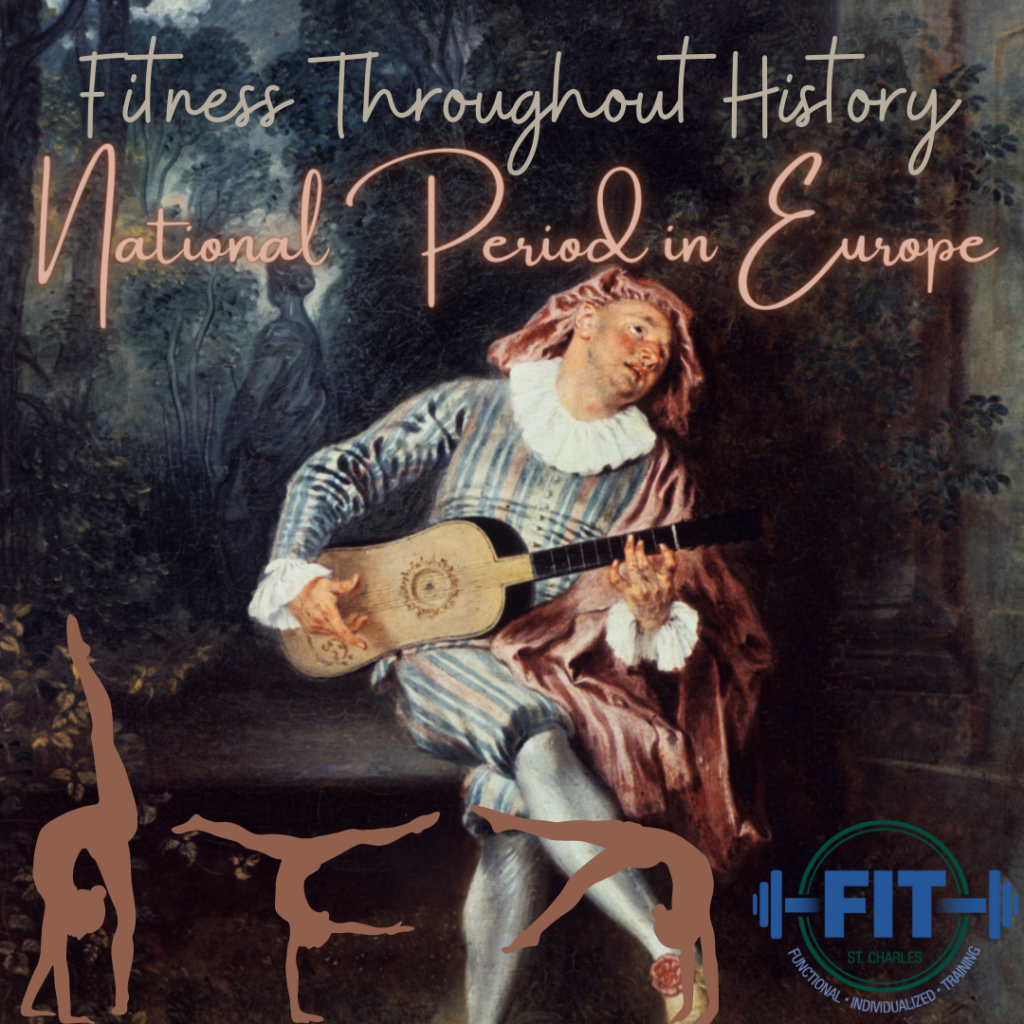
Let’s talk about the history of fitness! Today we are discussing The National Period in Europe (1700-1850).
Following the Renaissance, Europe saw many cultural changes. However, one thing that didn’t change was the understanding of the importance of fitness! There were many emerging nations in Europe at this time, many of them with intense feelings for nationalism and independence, which created the atmosphere for the first modern fitness movement. This came in the form of gymnastics (in this context, think more of the Ancient Greek gymnasiums, not specifically what we call gymnastics today) programs.
Gymnastics was enjoyed throughout many nations in Europe, especially Germany, Denmark, Sweden, and Great Britain. It is during this time that we start to see what our society today would consider a more “modern” gym experience.
In Germany, throughout the turmoil of Napoleon’s conquering, a man named Friedrich Jahn found purpose in physical fitness. He believed that Germany was less likely to be conquered if it was a society built on the foundations of a people who maintained high levels of physical fitness. He created exercise facilities that held equipment specifically for the purpose of working out including apparatuses specifically designed for running, jumping, balancing, climbing, and vaulting. These facilities were called “Turnvereins” and were developed throughout Germany.
In Sweden, Per Henrik Ling was also developing his own program, which consisted of three areas- educational fitness, military fitness, and medical fitness. Ling had a medical background, and therefore recognized that exercise was important for everyone. He also believed that exercise routines should be tailored to each individual based on their needs and current abilities (perhaps the first modern physical trainer!). It is believed that his gymnastics program was influenced by early Chinese body exercises. For years he tried to persuade the Swedish government to help him spread the word of his programs and the importance of fitness, in 1813 in conjunction with the government, he founded the Royal Central Gymnastics institute. He also invented equipment we still use in gymnastics today including the box horse, wall bars, and beams.
Meanwhile, in Denmark, Frank Nachtegall helped popularize gymnastic programs throughout Denmark, particularly in school systems, believing that early fitness intervention and consistency was key. Eventually, he became the director of Training Teachers of Gymnastics, a program designed to prepare future instructors.
Great Britain also saw a surge in overall interest in fitness and how important it is to every aspect of health. Archibald Maclaren, a medical student, much like Per Henrik Ling, was fascinated in the scientific benefits of fitness. His observations over the course of his career are similar to what the CDC and doctors all over the world recommend in the present day- he believed the cure for stress and fatigue, among other things, was exercise. In agreement with Ling, he also believed that fitness regimens should be tailored to the individual!
There are plenty of other examples of how regular exercise was beginning to pick up steam as a part of a balanced and healthy lifestyle in Europe. The biggest take away here is how this time period really began to bridge the gap between the understanding and practices of fitness of old and present day. Believing that individuals all need tailored workout routines and that regular exercise is not only good for the physical body, but overall mental health as well, is one of the fundamental tenets we follow here at FIT! Stop by today to see how we can make your fitness journey personalized for YOU and how YOU can best incorporate healthy habits into your lifestyle!!!
